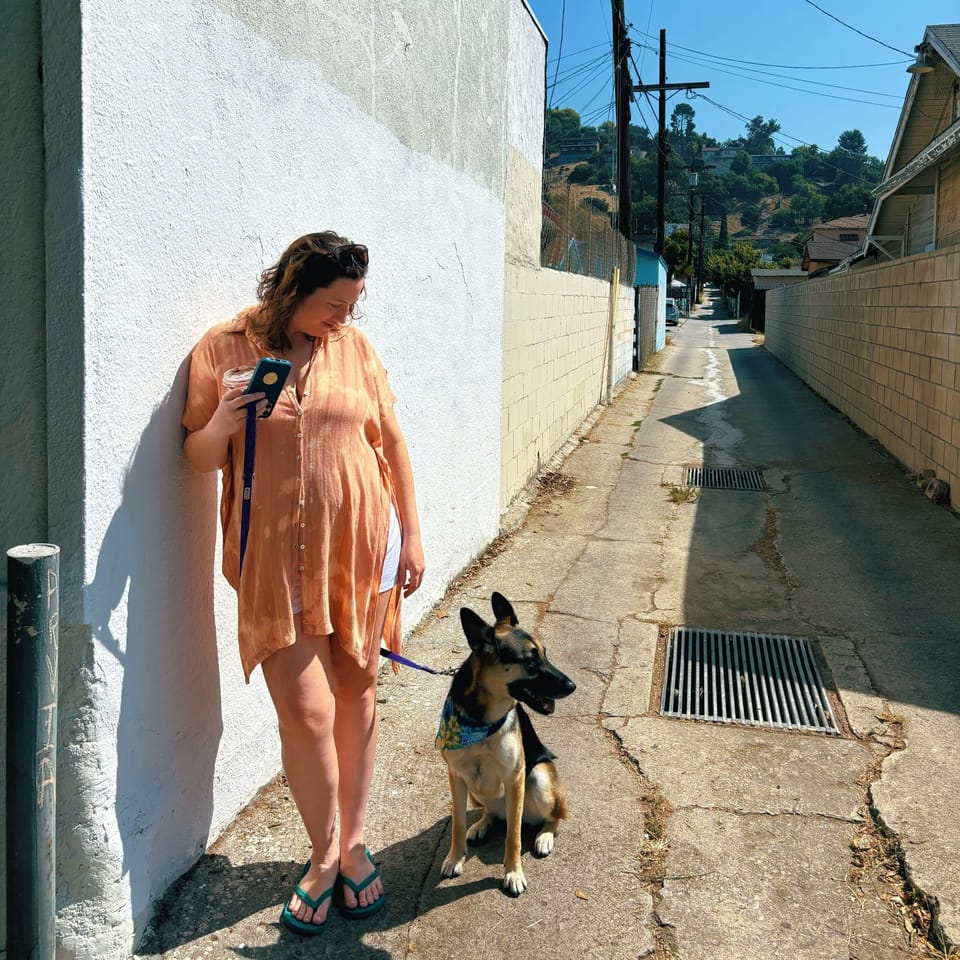Body Building, part five: Interiority

Welcome to Body Building, a series on strength, selfhood, pregnancy, and the uncertain future.
This story will be spread out in occasional installments over the next couple of months as part of our usual content mix while She’s A Beast is on a self-created, pre-programmed but nonetheless handcrafted “maternity leave.”
After my first trimester experience, I was waiting to be swept up by more frissons of hormonal activity—to be compelled to bury my face in baby onesies, for instance, or to “nest” in the form of designing a complicated nursery. But in my second trimester, I hit an incredible stride. While folding over at the waist was not as easy as it had been, for the most part, I was not experiencing the amount of physical difficulty I’d been promised. I had no pains. Moving around was still easy. I’d be reminded of my size when I put pants on, but it was even easy to mistake the baby kicks for bubbles of extremely mild indigestion. In fact, it was easy to forget I was pregnant a lot of the time. I was surprised to feel very like myself, even more like myself, and not because I turned out to be one of those women who are seemingly destined to be pregnant.
I’d constructed a good relationship with my body brick by painstaking brick, and I resented having to relinquish it to the unpredictable project of pregnancy. At least once a day, I stated to my husband how unfair it was that he would never have to be the pregnant one. (It did occur to me to wonder how good was my relationship with my body, really, if it couldn’t accommodate the baby-having process.) But after several weeks, the resentment looped back around into a sort of radical acceptance, a following of the white rabbit to a place defined by its resistance to logic or practicalities.
At first, I treaded carefully around these new physical developments and tried the “connecting breath”/diaphragmatic breathing that was meant to teach me to control my pelvic floor, the trampoline of muscles that helps suspend all our internal organs. But I found that we were already in extremely close contact. Thanks to all the core work inherent to bracing and lifting heavy weights, I could relax it, tighten it, breathe into it, and breathe out of it on command.
I continued to work out mostly normally, and until about 32 weeks, my only real nemesis was my energy levels. On a good day, I’d do all or most of a RISE workout. On a middling day, I would do some version of a LIFTOFF Phase Three workout. On a low-energy day, I would do the Hotel Special. I was glad to have an excuse not to run or jog, so I started regularly hiking in the hills of our neighborhood. I still biked. I lifted water jugs hither and thither, carried the grocery bags that the cashiers were always warning me would be too heavy. Back pain, joint pain, fatigue from the extra weight—none of it came to pass. It felt astonishing that lifting weights provided for a lot of this good experience, yet the official recommendations for exercise for pregnant women had been against lifting until 2020.
A lot of the marketing for prenatal workout programs I’d seen online had led me to believe that my pelvic floor would suddenly fall down, or tighten so much I’d be unpredictably peeing my pants everywhere; that my uterus would prolapse; that my abs would instantly separate; and that I had to tiptoe around all these things with specific warmups or movements. I was relieved to find in practice that other than adjusting my weights down, I didn’t need to treat this process as delicately or deliberately as I’d been made to believe by most of the conversation around it online.
I’d always been a staunch defender of the virtues and value of the internet and social media, their potential for innovation and community. But there was also just the fact that we have to spend some of our time in unproductive ways; was social media really so much worse than anything else?
But until the beginning of 2024, I could not credibly say what it was like to not be on social media, especially in its current form. Instagram in 2023 was extremely different from Instagram in 2010 when I joined, or 2013, or even 2018. The same was true of Twitter, which I’d been on since 2008. I joined Tumblr also in 2008. I joined Facebook in 2005. Who can even remember what stage of embryo I was in when I joined MySpace or LiveJournal; this information is lost to prehistory. TikTok was like a steroidal mega-mutant of all these things. I’d realized that every time I picked up my phone, even just to check the time, I’d get drawn in by some notification or other, then as if in a trance I’d tap into one app and scroll, and then another app and scroll, and 30 minutes later I’d lower my phone and no longer have even the slightest idea of what I’d been trying to accomplish in the first place. Then I’d remember I was trying to check the time, and the whole process would start all over again.
In January 2024, before I got pregnant but after several months of trying, I finally got sick enough of my phone problems that I wanted to do something about it.
The main pitfall that most “I switched to a dumbphone/flip phone for a week” people seem to encounter was the lack of maps and modern messaging apps. I erased my phone, did a clean install, and deleted or hid everything except Maps, Camera, Messages, Phone, Clock, Photos, Weather, and Calculator.
We can't have bots here.
Let's see some ID. (Just your real email, please.)
